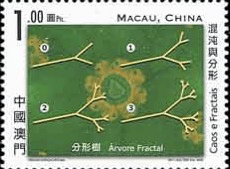Fractal is a concept in mathematics that describes complex geometric shapes with self-similar properties. Self-similarity means that the structure of a part of a shape is similar to the structure of the whole, that is, the characteristics of the shape remain consistent no matter at which scale it is observed. Fractal structures can be widely found in nature, such as snowflakes, coastlines, mountains, trees, and lightning paths.

Fractal geometry was proposed by French mathematician Benoît B. Mandelbrot in the 1970s, who studied many irregular shapes in nature and found that these shapes could be generated by simple recursive algorithms. The core idea of fractal geometry is to find the inherent order and regularity in complex, irregular shapes.
Well, let's explain it in plain language. To explain fractals in plain language, we can understand it like this: Fractals are a special kind of geometric shape. Its characteristic is that no matter how many times you magnify it, it looks almost the same, like an infinitely repeating pattern. This shape is very common in nature and mathematics.
For example, imagine a tree. If you look closely, you'll see that the structure of the branches is very similar to the structure of the tree as a whole. Each branch is like a small tree, with smaller branches on top, which are like smaller trees. This is a natural example of a fractal.
Take a fractal tree for example: a tree trunk has two forks (0); each fork can be used as a tree trunk, and it has two more forks (1); each fork can also be used as a tree trunk, and it has two more forks (2); if we continue to do this, we will get an image of a fractal tree. Each of its parts is a reduction of the overall image, and is self-similar to the overall image.
For example, snowflakes are also a fractal structure. Although each snowflake has a different shape, they all have a similar hexagonal structure, and the shape of each small branch is very similar to the shape of the entire snowflake.
